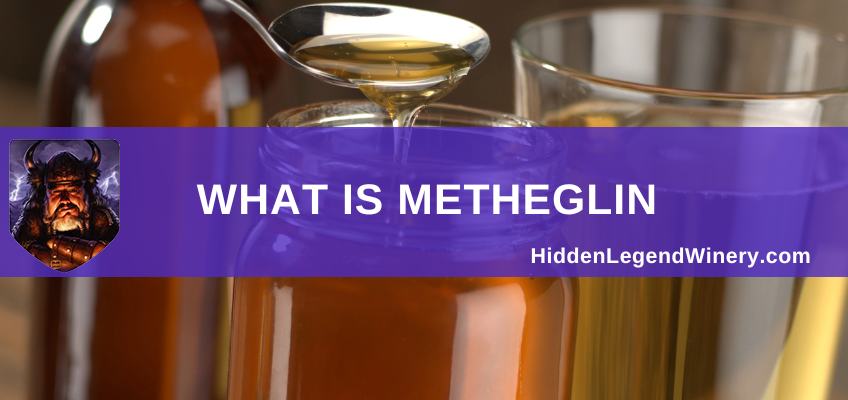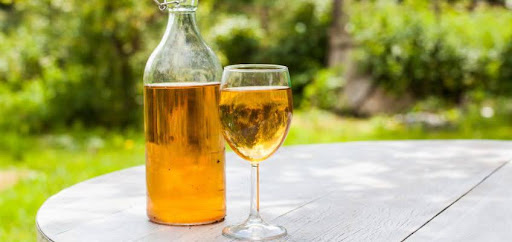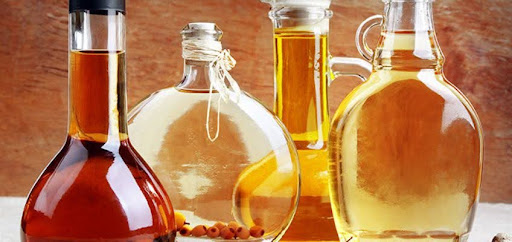
What is Metheglin?
Finding the perfect drink to impress your friends can be tough. Did you know there’s a delightful option called metheglin?
This article will guide you through what it is, how to make it, and its various flavors.
Key Takeaways
- Metheglin is a special kind of mead made by mixing honey, water, spices, and herbs. This combination adds unique flavors that traditional mead doesn’t have.
- The word “metheglin” comes from Welsh origins, meaning medicated or healing liquor. People used to think it had medicinal benefits because of the herbs in it.
- Making metheglin involves heating water with spices and herbs, then adding honey and fermenting the mixture with yeast. This process can take some time as the flavors need to blend well together.
- There are many types of metheglin with different tastes. Spices like cinnamon and cloves add warmth while herbs such as lavender give a floral touch. Each region has its own version based on local ingredients.
- Exploring metheglin allows you to experience ancient brewing traditions and enjoy a range of flavorful drinks that combine sweet honey with complex spice and herb notes.
What Is Metheglin? Making, Tasting, Types & Variations
Metheglin is a type of spiced mead that dates back to ancient times. Its name originates from the Welsh word “meddyglyn,” which means medicated or healing, reflecting its historical use in herbal medicine.
Definition and Origins of Metheglin: A Historical Overview
Metheglin starts its journey from an intriguing blend of honey, water, spices, and herbs, creating a unique category within alcoholic beverages. This spiced mead carries the essence of its main ingredient – honey – enriched with various flavors through added spices like mulling spices and licorice root or aromatic herbs.
The process transforms simple honey water into a richly flavored drink that has been savored for centuries.
Metheglin combines the sweetness of honey with the complexity of herbs and spices, offering a glimpse into ancient brewing traditions.
Tracing back to its roots, metheglin owes its name to Welsh meddyglyn, where “meddyg” stands for healing and “llyn” means liquor; similarly touched by Latin medicus meaning medical.
These origins highlight metheglin’s initial use as not just a beverage but also as a concoction believed to possess medicinal properties due to its herbal components. Over time, while it evolved into more of a leisure drink in many cultures, the practice of adding specific herbs for health benefits still influences recipes today.
How Metheglin Different from Traditional Mead
Traditional mead is a simple mix of honey, water, and yeast. This trio combines to create a sweet, fermented drink that many enjoy. Metheglin stands out by adding a rich layer of complexity through spices and herbs.
These ingredients bring new flavors and aromas that traditional meads don’t have. Think of Metheglin as the seasoned cousin of basic mead.
Makers often turn to Latin medicus (medical) and Welsh meddyg (healing) roots in crafting Metheglin. They select herbs not just for taste but also for their supposed health benefits.
Ingredients like lemon juice can add a refreshing twist, while muslin cloth acts as a filter during the process. The result? A beverage that feels more sophisticated than its simpler relative, offering both depth in flavor and an echo of ancient wellness traditions.
You can consider exploring the traditional mead variety pack offered by Hidden Legend Winery.
How to Make Metheglin: Step-by-Step Brewing Process
Making Metheglin involves combining honey, water, and yeast nutrient in a large pan to create the base. After adding spices and herbs, the mixture is left to infuse flavors over time before straining and bottling it for enjoyment.
Ingredients for Brewing Metheglin Mead
Creating Metheglin starts with gathering the right ingredients. This ensures your final product will taste delicious and have the intended medicinal properties. Here’s what you’ll need:
- Honey: The backbone of any mead, including Metheglin, is high-quality honey. You’ll require about 2 to 3 pounds for every gallon of water to achieve the desired sweetness and alcohol content.
- Water: Use clean, preferably filtered, water to avoid any off-flavors that might interfere with the mead’s taste.
- Yeast: Selecting the right yeast is crucial for fermentation. Wine yeast works well because it can withstand higher alcohol concentrations.
- Yeast Nutrient: This additive ensures your yeast remains healthy throughout the fermentation process, leading to a more consistent and complete fermentation.
- Spices and Herbs: The choice of spices and herbs varies widely but often includes cinnamon, cloves, nutmeg, or even lavender for their healing properties linked back to Latin “medicus” (medical) and Welsh “meddyg” (healing).
- Sanitizing Agent: Keeping everything clean is essential in mead-making to prevent contamination.
With these ingredients ready, you’re set to move on to preparing your large pan for the cooking stage.
Step-by-Step Procedure to Make Metheglin at Home
To make Metheglin, you will need to follow a specific procedure. Here’s a step-by-step guide:
- Start by heating the water in a large pot until it reaches a gentle simmer.
- Add the spices and herbs of your choice to the pot, allowing them to infuse into the water for about 15-20 minutes.
- Next, pour in the honey and stir until it completely dissolves into the infused water.
- Once the honey is fully dissolved, remove the pot from heat and let it cool down to room temperature.
- After it has cooled, strain out the spices and herbs from the liquid using a fine mesh strainer or cheesecloth.
- Transfer the infusion into a sanitized fermentation vessel, add yeast, and seal with an airlock for fermentation.
Following these steps will result in your very own batch of delicious Metheglin!
How to Add Spices and Herbs
When making Metheglin, adding spices and herbs is a critical step in the flavor infusion process. Commonly used spices include cinnamon, cloves, ginger, and nutmeg, while popular herbs such as rosemary, thyme, and lavender are also added for their aromatic qualities.
It is essential to carefully select and measure the spices and herbs before incorporating them into the mead base to achieve the desired flavor profile. After adding these ingredients, they must be thoroughly mixed into the liquid to ensure an even distribution.
The infusion time required varies depending on the specific spices and herbs used; some may require several weeks for optimal flavors to develop.
Time Required for Flavor Infusion in Metheglin
After adding spices and herbs to your metheglin mixture, the infusion process begins. The time required for flavor infusion varies depending on the specific spices and herbs used. Some ingredients infuse quickly, such as cinnamon or cloves, while others like ginger or vanilla may take longer to impart their flavors.
It’s essential to monitor the infusion process regularly to achieve the desired taste profile without overpowering other flavors.
Once you’re satisfied with the flavor intensity, strain out the spices and herbs to prevent over-infusion and maintain a balanced taste in your metheglin.
Taste, Types, and Variations of Metheglin
Exploring the various flavor profiles and regional variations of Metheglin can be an exciting journey for any enthusiast. For more on this intriguing topic, delve deeper into the world of Metheglin to learn about its taste, types, and unique variations.
Flavor Profiles of Metheglin: Sweet, Spicy, and More
Metheglin offers a diverse range of flavor profiles, from bold and spicy to subtle and floral. Common spices like cinnamon, cloves, and ginger add warmth and depth, while herbs such as lavender and rosemary contribute a touch of earthiness or floral notes.
The use of regional ingredients also influences the taste, giving rise to unique variations that reflect local culinary traditions.
Exploring metheglin’s flavor profiles may lead you down an exciting path of discovery. Whether you prefer the robustness of spiced varieties or the delicacy of floral infusions, there is sure to be a metheglin flavor that appeals to your palate.
Common Spices and Herbs Used in Metheglin Mead
Transitioning from the diverse flavor profiles of Metheglin, it’s essential to explore the common spices and herbs used in this delicious beverage. Cinnamon, ginger, cloves, and nutmeg are often employed to infuse a warm and comforting essence into Metheglin.
Additionally, cardamom adds a unique aromatic note that enhances the overall taste experience. Furthermore, rosemary and thyme can contribute herbal undertones that pair well with the sweetness of honey, providing a rich and complex flavor profile.
These spices and herbs are carefully selected for their ability to complement the natural sweetness of honey while adding depth and dimension to the drink. The combinations create an enticing blend that truly sets Metheglin apart as an extraordinary libation with its own distinct character.
Regional Variations of Metheglin: Unique Twists on Tradition
Transitioning from the common spices and herbs used in metheglin, let’s explore the regional variations of this versatile beverage. Different cultures have their own unique twist on metheglin, adding local ingredients and flavors that reflect their culinary traditions and terroir.
From the floral notes of lavender in French metheglins to the warming spices found in Indian varieties, each region offers a distinct take on this ancient libation.
Metheglin enthusiasts can delight in discovering how various regions infuse their own cultural influences into this time-honored drink. Whether it’s the use of indigenous herbs or specific brewing techniques, exploring regional variations adds an exciting dimension to the world of metheglin.
Conclusion: Why Metheglin is a Unique Mead Choice
Crafting Metheglin involves infusing honey with a blend of spices and herbs. The ancient origins of this beverage date back to Latin times, where it was believed to have medicinal properties.
It stands apart from traditional mead due to the addition of these healing ingredients, resulting in a unique and flavorful drink that continues to evolve within the realm of modern brewing.
FAQs
1. What does metheglin mean?
Metheglin is a word that comes from the Latin “medicus” meaning medical and the Welsh “meddyg” for healing, which refers to a type of honey wine made with spices and herbs.
2. How was metheglin used in the past?
In the past, people believed metheglin had healing properties because of its medicinal herbs and spices, so they often drank it to improve their health.
3. Can you still find metheglin today?
Yes, you can still find metheglin today. It’s enjoyed by those who appreciate traditional beverages or are interested in historical recipes.
4. What makes metheglin different from regular mead?
What sets metheglin apart from regular mead is its blend of herbs and spices, adding unique flavors that were once thought to have healing benefits.

How to Bottle Mead for Aging and Storage
Help Save The Bees By Drinking Mead


